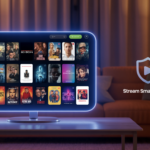In today’s rapidly evolving digital landscape, cybersecurity awareness is more critical than ever. The Cyber Awareness Challenge 2025 is a mandatory training program designed to educate employees, military personnel, and government contractors on best practices for safeguarding sensitive information. Many participants search for “Cyber Awareness Challenge 2025 answers” to ensure they pass the exam efficiently.
While memorizing answers can help, understanding the core concepts is essential for real-world cybersecurity preparedness.
The Cyber Awareness Challenge 2025 is an annual training program designed to reinforce cybersecurity best practices. It is mandatory for personnel in the U.S. Department of Defense (DoD), military, and other federal agencies, as well as for private organizations that handle sensitive data.
This guide provides an in-depth overview of the Cyber Awareness Challenge 2025, including:
- A breakdown of key topics
- Verified answers to common questions
- Strategies to pass the challenge with ease
- The importance of cybersecurity awareness in 2025 and beyond
By the end of this article, you’ll be fully prepared to ace the challenge while reinforcing your own digital security skills.
What is the Cyber Awareness Challenge 2025?
The Cyber Awareness Challenge is an online training module that tests users on best cybersecurity practices. It uses real-world scenarios to educate personnel on recognizing and avoiding cyber threats.
The 2025 version has been updated to address emerging threats, including:
- AI-driven phishing attacks – Cybercriminals now use artificial intelligence to create more convincing phishing emails.
- Ransomware evolution – Attacks are more sophisticated, targeting businesses and government institutions.
- Deepfake scams – Fake video and audio clips used to impersonate people and spread misinformation.
- Zero-day vulnerabilities – Previously unknown security flaws exploited by hackers before a fix is available.
The training consists of interactive modules, real-world examples, and quizzes to test users’ knowledge. It ensures that personnel can identify threats, protect sensitive information, and prevent cyberattacks.
Key Topics Covered in Cyber Awareness Challenge 2025 Answers
The challenge focuses on seven key areas of cybersecurity:
- Phishing and Social Engineering
- Data Privacy and Protection
- Insider Threats
- Malware and Ransomware
- Physical Security of Devices
- Safe Internet Practices
- Classified vs. Unclassified Information Handling
Below, we provide detailed explanations and verified answers for each section.
1. Phishing and Social Engineering
Phishing is one of the most common cyber threats, where hackers trick users into revealing personal or sensitive information. Attackers often pose as trusted entities to deceive victims.
Common Phishing Techniques:
- Email Spoofing – Attackers forge email headers to make emails appear from a trusted source.
- Spear Phishing – Targeted phishing attempts using personal information.
- Vishing (Voice Phishing) – Scammers use phone calls to manipulate victims.
Question Example: What is the best way to verify the authenticity of an email requesting sensitive information?
Answer: Contact the sender through an official channel before responding.
Question Example: What should you do if you receive a suspicious email with a link?
Answer: Do not click the link. Hover over it to see the URL, and report the email to your IT department.
2. Data Privacy and Protection
Sensitive data, such as PII (Personally Identifiable Information) and classified documents, must be properly secured to prevent leaks and unauthorized access.
Question Example: How should you handle documents containing sensitive personal information?
Answer: Store them in locked cabinets or encrypted digital storage.
Question Example: What should you do if you find an unencrypted USB drive in your workplace?
Answer: Report it to IT security immediately. Never insert unknown USB devices into your computer.
Best Practices for Data Protection:
🔹 Create strong, one-of-a-kind passwords for every account.
🔹 Enable multi-factor authentication (MFA) for an extra layer of security.
🔹 Avoid sharing personal information on social media, which hackers can use for phishing.
3. Insider Threats
Not all cyber threats come from external attackers. Insider threats occur when individuals within an organization misuse access to compromise security.
Common Signs of an Insider Threat:
- Excessive data downloads
- Attempting to access restricted files
- Sudden change in behavior or work habits
Question Example: What should you do if you suspect an insider threat?
Answer: Report suspicious activity to the security team immediately.
Question Example: What is an example of an insider threat?
Answer: An employee selling confidential information to a competitor or foreign government.
4. Malware and Ransomware
Malware is malicious software designed to steal, corrupt, or lock data. Ransomware specifically encrypts files and demands payment to restore access.
Question Example: What is the best way to prevent malware infections?
Answer: Keep software updated, avoid downloading files from unknown sources, and use antivirus protection.
Question Example: What should you do if your system is infected with ransomware?
Answer: Disconnect from the network and report it to IT. Never pay the ransom.
Top 3 Ways to Avoid Malware Attacks:
- Do not download attachments from unknown sources.
- Keep your operating system and security patches up to date.
- Make a secure offline backup of your most important information.
5. Physical Security of Devices
Cybersecurity extends beyond software—it includes the physical security of computers, smartphones, and storage devices.
Question Example: How should you secure your computer when leaving your desk?
Answer: Lock your screen or log out before walking away.
Question Example: What should you do with printed sensitive documents?
Answer: Shred them before disposal or store them in locked cabinets.
Physical Security Best Practices:
- Use strong passwords on all devices.
- Enable remote wiping features on smartphones and laptops.
- Never leave devices unattended in public places.
6. Safe Internet Practices
Browsing the internet comes with risks. Unsafe connections, weak passwords, and fake websites can lead to cyberattacks.
Question Example: What is the safest way to use public Wi-Fi?
Answer: Use a Virtual Private Network (VPN) and avoid accessing sensitive accounts.
Question Example: How do you verify a website is secure?
Answer: Ensure the URL starts with “https://” and check for a padlock icon in the address bar.
How to Stay Safe Online:
🔹 Avoid clicking on suspicious ads (malvertising).
🔹 Use reputable security software to block malicious sites.
🔹 Regularly clear your browser’s cache and history.
7. Classified vs. Unclassified Information Handling
Government and military personnel handle classified data that requires strict protection measures.
Question Example: What should you do if you receive classified information via unclassified email?
Answer: Do not open, forward, or download it. Report it immediately to security personnel.
Question Example: How should classified documents be disposed of?
Answer: Through authorized shredding or incineration according to security protocols.
Conclusion: Why Cyber Awareness Matters in 2025
Cybersecurity is a shared responsibility. Whether you’re in government, business, or an individual user, understanding cyber risks and adopting best practices can protect your data, privacy, and organization.
By using this guide, you now have the answers and strategies to successfully complete the Cyber Awareness Challenge 2025 answers while strengthening your own cybersecurity defenses.
FAQs for Cyber Awareness Challenge 2025 Answers
1. What is the main purpose of the Cyber Awareness Challenge 2025 Answers?
To educate personnel on cybersecurity best practices, including phishing, malware prevention, insider threats, and safe data handling.
2. How can you identify a phishing attempt?
Look for urgent language, suspicious links, misspellings, and unfamiliar sender addresses. Always verify requests before clicking or responding.
3. What should you do if you suspect an insider threat?
Report unusual behavior, unauthorized access attempts, or excessive data downloads to your security team or IT department.
4. How can you protect your personal and work devices from malware?
Keep software updated, use antivirus protection, avoid downloading unknown files, and never click on suspicious links.
5. What is the safest way to use public Wi-Fi?
Use a VPN and avoid accessing sensitive accounts or entering personal information while connected.






